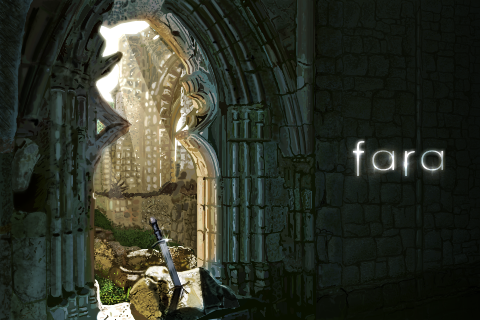Recently, The Smithsonian American Art museum unveiled the winners of a 2012 exhibition that will display videogame art. Out of the 240 nominees, 80 were chosen, and, for the most part (uh....I'm looking at you Battle for Middle Earth II) the choices were sound. Because videogame art seems to be getting a lot of press lately, I thought it would be a great time to discuss the art style for our forthcoming game.
Before starting our project, I thought a lot about how our game should look. We knew it was going to be 2D and I knew that I wanted it to have retro inspired look. However, with Texel's engine, we could do a lot more than simply draw sprites or tiles (as I mentioned in one of our earlier posts), so I also knew that I wanted to incorporate some more modern aspects (like particle effects). The final piece of the puzzle was the fact that the entire game world would be one, large single canvas.
I quickly came to the conclusion that the world should be a highly rendered, painterly environment. With the ability to work on such a large canvas, and no need for repetition, this was a natural choice. Next, I needed to determine the look of the painting. The past few games I've worked on focused more on layer styles in Photoshop, mixed with clean design and occasional cartoon exaggeration. I love this sort of style, but I knew for our game I wanted to try something different, so I opted for a super saturated, detailed oriented look. Also, I made sure to paint from a predetermined palette for each world area, so all of the colors would feel unified. Working in this way has been really enjoyable, and I've loved trying to pack as much detail into every screen as I can.
Once my first area (a beach and a forest) were complete, I began to think about how the characters in the game should be portrayed. My initial impulse was to paint them in the same style as the background, but this yielded terrible results. The main issue was that the characters meshed too much with their surrounding environment, and the whole thing started to feel muddy. Without the ability to easily tell environment from character, I worried the gameplay would suffer.
At this point, I started thinking about past games I've played, in particular The Secret of Mana (which can be found in the gallery at the top of this post). This Super Nintendo classic used outlines around all of its character sprites to differentiate them from the world. As a test, I took my test character, drew a hard black outline around him and placed him on top of my world canvas. The effect was a success, as an easy distinction between the character and the world became apparent. The only remaining issue was that the highly painted character looked out of place with a black outline, which was more reminiscent of classic games (try this site out for great examples of old school pixel art). I tried redrawing him with a more retro inspired flavor and found it not only unified him with the black outline, but the different style helped him stand out from the world even more.
As time wears on and I draw more characters for the game, and look at my completed environments, I feel that I have developed an art style that is beautiful without intruding on gameplay. Because in the end, the game's art style should compliment the game design. After all, that's what makes a video"game" fun, and video"art" something you were forced to talk about in your college art history class.






